Safe At-Home Workouts
After C-Section
Note: Friends, if you want to read this article in any other language, please change the language from the translate button at the top of this article.
 |
| After a C-section, it is important to engage in exercise |
Friends, after a C-section, it is important to engage in easy and safe exercises and physical activities to regain the original body shape. It is also necessary for recovery and promoting overall health.
Here are some reasons why workouts are needed after a C-section:
Promotes healing:
Exercise can improve blood flow and help to promote healing in the incision area.
Engaging in gentle exercises can also help to reduce inflammation, alleviate pain, and improve overall mobility.
Restores core strength:
Pregnancy and delivery can weaken the core muscles, including the abdominal muscles.
Engaging in postpartum workouts can help to restore core strength, which is important for overall physical health and preventing future injuries.
Reduces risk of complications:
Exercise can help to reduce the risk of developing complications after a C-section, such as blood clots, infection, and constipation.
Reduces stress and improves mood:
Exercise can help to reduce stress and improve mood by releasing endorphins, which are natural feel-good chemicals in the brain.
This can be especially important for new mothers who may be experiencing postpartum depression or anxiety.
Helps to lose weight:
Engaging in regular exercise can help to promote weight loss after a C-section.
However, it is important to consult with a healthcare provider before starting any postpartum exercise regimen to ensure that it is safe and appropriate for your individual needs and health status.
Overall, workouts after a C-section can help to promote physical and emotional well-being, aid in recovery, and prevent future health complications.
Some Safe And Easy Workouts After C- Section
It's important to consult with a healthcare provider before starting any postpartum exercise routine, especially after a C-section.
Once you have the green light to exercise, here are some safe at-home workouts to consider:
Kegels:
Kegels can help to strengthen the pelvic floor muscles, which can be weakened during pregnancy and childbirth.
To perform a kegel, contract the muscles you use to stop the flow of urine for 5-10 seconds, then release. Repeat 10-15 times, several times a day.
Abdominal bracing:
This exercise can help to engage and strengthen the abdominal muscles without putting too much strain on the incision site.
Lie on your back with your knees bent and feet flat on the floor. Place your hands on your belly and contract the abdominal muscles, pulling them in towards your spine.
Hold for 5-10 seconds, then release. Repeat 10-15 times, several times a day.
Pelvic tilts:
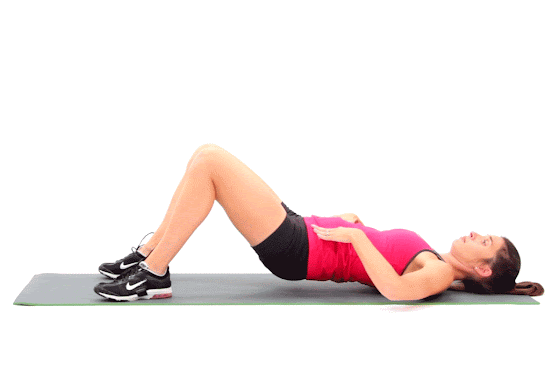 |
| This exercise can help to stretch and strengthen the lower back and abdominal muscles |
This exercise can help to stretch and strengthen the lower back and abdominal muscles.
Lie on your back with your knees bent and feet flat on the floor. Slowly tilt your pelvis forward, pressing your lower back into the floor, then tilt your pelvis back, arching your lower back slightly.
Repeat 10-15 times, several times a day.
Wall push-ups:
Wall push-ups can help to strengthen the chest, shoulder, and arm muscles.
Stand facing a wall with your hands placed on the wall at shoulder height. Slowly bend your elbows, lowering your chest towards the wall, then push back up.
Repeat 10-15 times, several times a day.
Seated leg lifts:
This exercise can help to strengthen the hip and thigh muscles. Sit in a chair with your feet flat on the floor. Lift one leg straight out in front of you, then lower it back down. Repeat 10-15 times on each leg, several times a day.
Walking:
Walking is a great low-impact exercise that can help to promote circulation, reduce swelling, and improve overall cardiovascular health.
Start with short walks around your home or neighborhood and gradually increase the duration and distance as your body allows.
Resistance band exercises:
Resistance band exercises can help to tone and strengthen various muscle groups, including the arms, legs, and core. Choose low-resistance bands and perform exercises such as bicep curls, squats, and seated rows.
Swimming or water aerobics:
Swimming or water aerobics can be a great way to exercise without putting too much pressure on the body. The water provides natural resistance and buoyancy, which can help to strengthen and tone muscles.
Dancing:
Dancing can be a fun and enjoyable way to get moving and improve cardiovascular health. Choose low-impact dance styles, such as Zumba or ballet-inspired workouts, and modify the intensity as needed.
Yoga:
Yoga can be a great way to promote postpartum recovery after a C-section.
However, it's important to choose yoga poses that are safe and appropriate for your individual needs and health status.
Here are some safe yoga poses to consider after a C-section, along with instructions on how to do them:
1. Cat/Cow pose:
 |
| This pose can help to stretch and strengthen the spine, as well as engage the core muscles |
This pose can help to stretch and strengthen the spine, as well as engage the core muscles.
- Start on your hands and knees with your wrists directly under your shoulders and your knees under your hips.
- Inhale and arch your back, lifting your head and tailbone towards the ceiling (Cow pose).
- Exhale and round your spine, tucking your chin to your chest and bringing your tailbone towards your knees (Cat pose).
- Repeat 5-10 times.
2. Child's pose:
This pose can help to stretch and relax the lower back and hips.
Start on your hands and knees and then bring your hips back towards your heels, stretching your arms out in front of you.
Rest your forehead on the floor and hold for 5-10 breaths.
3. Warrior II pose:
This pose can help to strengthen the legs, hips, and core muscles.
- Start in a standing position with your feet hip-width apart.
- Step your left foot back and turn it out to a 90-degree angle, keeping your right foot facing forward.
- Bend your right knee and extend your arms out to the sides, with your shoulders directly over your hips (Warrior II).
- Hold for 5-10 breaths and then switch sides.
4. Bridge pose:
This pose can help to strengthen the glutes and lower back muscles.
- Lie on your back with your knees bent and feet flat on the floor.
- Press your feet into the floor and lift your hips up towards the ceiling, keeping your arms at your sides.
- Hold for 5-10 breaths and then slowly lower down.
5. Cobra pose:
 |
| This pose can help to stretch and strengthen the spine and abdominal muscles |
This pose can help to stretch and strengthen the spine and abdominal muscles.
- Lie on your stomach with your hands under your shoulders and your elbows close to your sides.
- Inhale and lift your chest and head off the floor, keeping your shoulders down and your elbows close to your sides.
- Hold for 5-10 breaths and then slowly lower down.
Remember to always listen to your body and avoid any poses that cause pain or discomfort. Start slowly and gradually increase the intensity and duration of your yoga practice as your body allows.
Remember to always consult with a healthcare provider before starting any new exercise regimen, especially after a C-section.
Frequently Asked Questions About Workouts After C-Section
Here are some frequently asked questions about workouts after a C-section:
Q. How long should I wait to start working out after a C-section?
A. It's important to wait until your healthcare provider gives you the green light to start working out again after a C-section.
This will typically be around 6-8 weeks after the procedure but may vary depending on your individual recovery.
Q. What types of exercises should I avoid after a C-section?
A. You should avoid any exercises that put too much pressure on the abdominal muscles, such as sit-ups, crunches, or planks, for at least the first few months after a C-section.
You should also avoid any high-impact exercises or activities that may cause jarring or bouncing, such as running or jumping.
Q. Can I lift weights after a C-section?
A. It's generally safe to lift weights after a C-section, but you should start with light weights and gradually increase the resistance as your body allows.
Avoid lifting weights that are too heavy and may cause straining or discomfort.
Q. How much exercise should I do after a C-section?
A. Start with low-intensity exercise, such as walking or gentle yoga, and gradually increase the duration and intensity as your body allows.
Aim for at least 30 minutes of moderate exercise per day, but listen to your body and don't push yourself too hard too soon.
Q. How can I tell if I'm overdoing it with exercise after a C-section?
A. If you experience any pain, discomfort, or bleeding during or after exercise, it may be a sign that you're overdoing it.
Take a break and rest if needed, and consider decreasing the intensity or duration of your workouts. Always listen to your body and avoid any activities that cause pain or discomfort.
Q. Can I do core exercises after a C-section?
A. You can start with gentle core exercises that focus on activating the pelvic floor and transverse abdominal muscles, which can help to support the abdominal area and aid in recovery.
However, you should avoid any exercises that put too much pressure on the rectus abdominis muscles, such as traditional crunches or sit-ups, until you've fully healed.
Q. How can I protect my incision while exercising?
A. It's important to wear supportive clothing that provides gentle compression to the abdominal area, such as a postpartum belly wrap or high-waisted leggings.
You should also avoid any exercises that cause pulling or stretching around the incision site.
Q. Is it safe to do cardio after a C-section?
A. Low-impact cardio exercises, such as walking, swimming, or cycling, can be safe and beneficial after a C-section.
However, you should avoid high-impact exercises or activities that may cause jarring or bouncing, such as running or jumping, until you've fully healed.
Q. How can I incorporate exercise into my postpartum routine with a newborn?
A. Try to find small pockets of time throughout the day to fit in short bursts of exercise, such as taking a brisk walk with your baby in a stroller or doing some gentle yoga poses while your baby naps.
You can also enlist the help of a partner or family member to watch your baby while you go for a long walk or attend a fitness class.
Q. What should I do if I experience any postpartum complications during or after exercise?
A. If you experience any symptoms such as bleeding, pain, or discomfort during or after exercise, stop immediately and consult with your healthcare provider.
It's important to listen to your body and avoid pushing yourself too hard too soon.
Friends, Stay Fit, Stay Happy
--------------------------------------------------------
Friends, if you liked it, please share it with your friends.
SHARING IS CARING.
Compiled by: Paramjit Singh Rana

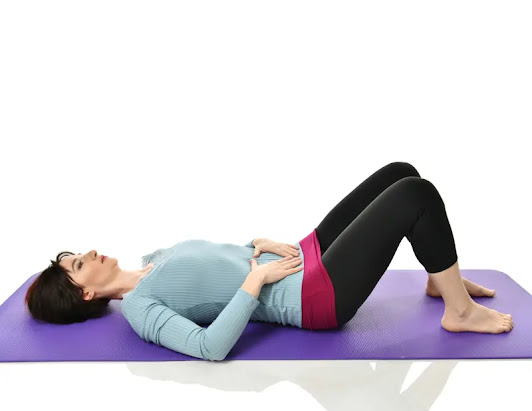

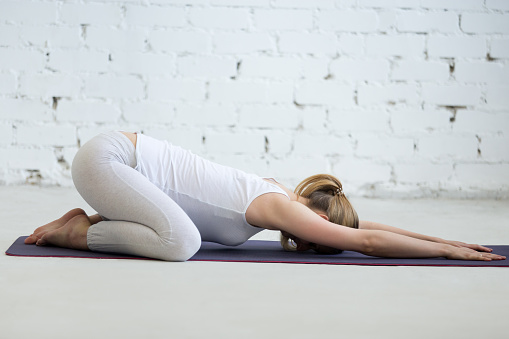
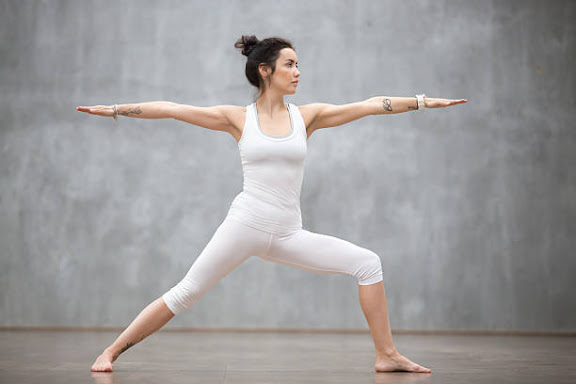
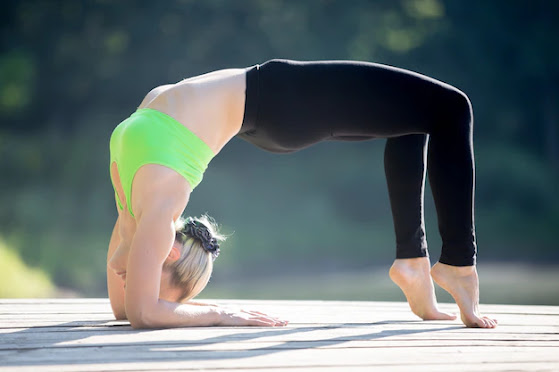
Comments
Post a Comment